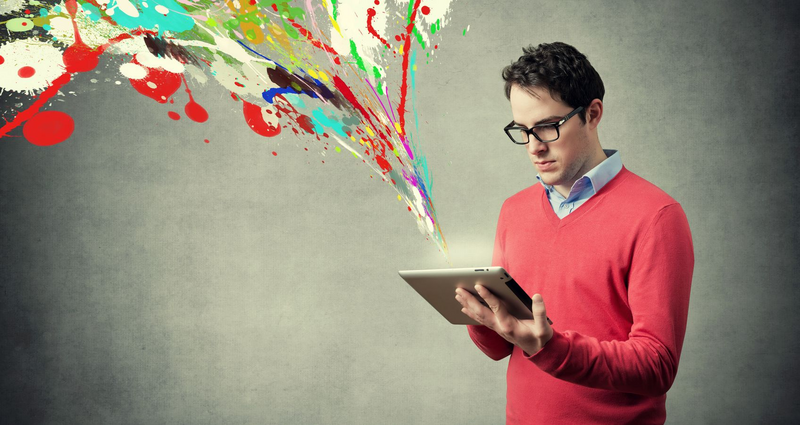ATD Blog
Surprising Link Between Creativity and Resilience
Tue Jun 13 2023

Resilience became a much-discussed topic during the pandemic. After all, a resilient workforce can better adapt to change, overcome obstacles, and stay motivated in the face of adversity. When I speak to corporate clients about resilience, some say, “Oh, we’re done with resilience,” and I can understand that. After being forced to be resilient under dire circumstances during the pandemic, I can see why there would be some pushback. We humans don’t like constant change.
However, when I speak about the connection between creativity and resilience, people light up. Creativity is the ability to generate novel solutions, while resilience is the ability to bounce back from setbacks or failures. On the surface, these two concepts may seem unrelated, but, on closer examination, they are closely linked:
Both creativity and resilience require a certain level of mental flexibility. To be creative is to consider multiple perspectives, challenge assumptions, and generate ideas that may not be immediately obvious. Similarly, to be resilient, you must adapt to new circumstances, reframe challenges as opportunities, and find new solutions when old ones fail.
This mental flexibility is supported by cognitive processes common to creativity and resilience. For example, both require tolerating ambiguity and uncertainty. When you’re trying to come up with a new idea, you must be comfortable with not knowing the answer immediately. Similarly, when you’re facing a setback, you must tolerate the discomfort of not knowing how things will turn out.
Both creativity and resilience require the ability to shift your focus between different levels of analysis. In other words, you must be able to zoom in on the details of a problem or situation but also zoom out to see the bigger picture. This allows you to connect seemingly unrelated ideas or identify patterns others may miss.
The key to both creativity and resilience is to embrace a growth mindset to view failure as a learning opportunity and use it to inform future efforts. One thing I know for sure is that to be creative is to be resilient and vice versa. When you apply creativity to resilience, you will not only bounce back, you will emerge wiser, stronger, and more resourceful.
So, why is this link between creativity and resilience important for talent development professionals to understand?
By fostering a culture that supports creativity, you indirectly strengthen resilience. When employees are encouraged to think creatively, they also develop the mindsets and skillsets essential for resilience and innovation.
By promoting resilience, you indirectly foster creativity. When employees are taught ways to bounce back from adversity, they are more likely to take risks and generate new ideas, and less likely to be held back by the fear of failure, which can stifle creativity.
Fostering creativity and resilience can help reduce excessive stress, enhance mental health, and lead to a more innovative and adaptable workforce.
Here are some practical ways to build resilience through creativity:
Deep work: Design employee work experience to include the time and space for “deep work.” This concept was coined by computer science professor Cal Newport, who suggests that to be truly productive, we should log out of all interruptions for several hours a day to sustain our focus. Deep work is a state of peak concentration that lets you learn hard things more quickly and create quality work faster.
Flow: Deep work primes you for entering a flow state where you are absorbed in the task, time stops, and you are in the zone where everything clicks. Mihaly Csikszentmihalyi theorised flow and says that “humans are at their best when immersed deeply in something challenging \[but not too challenging\].”
You can experience flow in various activities, including a good conversation, a work task, playing a musical instrument, reading a book, writing, crafts, gardening, participating in sports, and artmaking. Flow states put us in a positive state of mind, of being open and receptive to new possibilities. When you are in the flow, you are naturally immersed in the present moment and free of negative emotions like fear and anxiety, so it positively affects your stress levels.
Cultivating creativity: When you engage in creative activities, including hobbies such as painting or woodworking, you increase your brain’s capacity for creative thinking, pattern recognition, and developing visual-spatial skills. These skills enhance your problem-solving abilities in real-life situations.
Ruth Richards, one of the researchers who coined the term “everyday creativity” and a psychology professor at Saybrook University and Harvard Medical School, says, “Engaging in creative behaviours, makes us more dynamic, conscious, non-defensive, observant, collaborative, and brave.”
Creativity produces positive emotions that can unlock inner resources for dealing with stress and uncertainty. It is possible to learn creative techniques to reframe obstacles into opportunities (a good way to turn pessimism into optimism) and techniques for improvising and generating new ideas about any challenge you are facing.
Reframing: Reframing is a tool common to both creative problem-solving and resilience.
In light of the strong connection between creativity and resilience, I invite you to consider adding creativity and resilience skills development to your talent development programs. Creative resilience is not only crucial to innovation, but it also enhances mental health and well-being.
